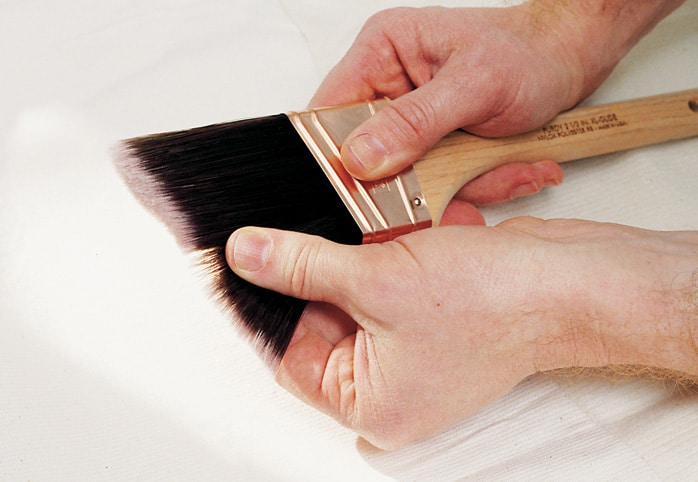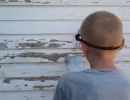This buying guide will help you choose the right paintbrush for your needs. Learn about the different types of paintbrushes available, how to choose the right size and type of paintbrush for your painting project, and how to recognize quality.
If you have shopped for paintbrushes at a paint store or home improvement center, you have seen the scores of paintbrushes piled in bins and hanging on hooks. The selection is vast. And so is the price range. This brush is $13, and that one is 75 cents. What is the difference?
Before you opt for a cut-rate paintbrush, consider this: The brush you choose can make the difference between a great paint job and a lumpy, bristle-filled disaster.
When it comes to paintbrushes, you usually get what you pay for.
In this article, we’re going to help you understand the fundamentals so you can make the right choice.
Natural vs. Synthetic Bristles
If you are using alkyd paint or a finish that requires paint thinner or a solvent in the cleanup process, choose brushes that have natural bristles. They cost more but they apply the paint more smoothly and evenly.
But don’t use natural bristles for water-based paint. If you are applying latex paint or a finish that is water-based, choose brushes with synthetic bristles— natural bristles lose their integrity when wet, similar to the way hair gets during a shower. Synthetic brushes are the way to go.
But be aware that there is more than one kind of synthetic brush. The two main types of fibers are polyester and nylon.
Polyester paintbrushes not only keep their shape in water, but they also hold up to humidity and heat.
Nylon paintbrushes will not wear out as readily, but they do not hold up as well when the temperature climbs.
Sizes of Paintbrushes
Brushes are sold in many sizes, from tiny detail brushes to 5-inch (or wider) brushes. If you are painting an average room, all you should need is a 4-inch brush with a straight edge, a 1 1/2-inch brush for sashes, and a 2-inch brush for trim.
Recognizing Paintbrush Quality
When buying brushes, don’t skimp on quality because it will show in the results. Look for many different lengths of bristles that are split at the ends (this allows the brush to hold more paint). Bristles should be packed tightly and secured into a wooden handle with epoxy, not glue.
Before purchasing, hold the brush as you would when painting. Make sure the brush is a comfortable weight and the grip feels good.
Then fan the bristles to make sure they spread evenly without gaps.
Bounce the tip of the brush against a surface to test for springiness. Springy bristles are good.










 Don Vandervort writes or edits every article at HomeTips. Don has:
Don Vandervort writes or edits every article at HomeTips. Don has:


